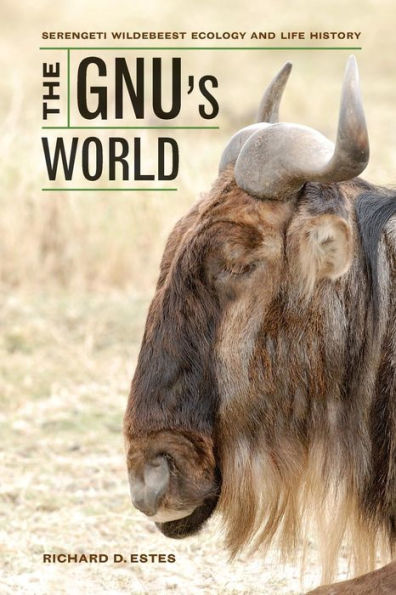This is the first scholarly book on the antelope that dominates the savanna ecosystems of eastern and southern Africa. It presents a synthesis of research conducted over a span of fifty years, mainly on the wildebeest in the Ngorongoro and Serengeti ecosystems, where eighty percent of the world’s wildebeest population lives. Wildebeest and other grazing mammals drive the ecology and evolution of the savanna ecosystem. Richard D. Estes describes this process and also details the wildebeest’s life history, focusing on its social organization and unique reproductive system, which are adapted to the animal’s epic annual migrations. He also examines conservation issues that affect wildebeest, including range-wide population declines.
1117256982
The Gnu's World: Serengeti Wildebeest Ecology and Life History
This is the first scholarly book on the antelope that dominates the savanna ecosystems of eastern and southern Africa. It presents a synthesis of research conducted over a span of fifty years, mainly on the wildebeest in the Ngorongoro and Serengeti ecosystems, where eighty percent of the world’s wildebeest population lives. Wildebeest and other grazing mammals drive the ecology and evolution of the savanna ecosystem. Richard D. Estes describes this process and also details the wildebeest’s life history, focusing on its social organization and unique reproductive system, which are adapted to the animal’s epic annual migrations. He also examines conservation issues that affect wildebeest, including range-wide population declines.
29.95
Out Of Stock
5
1

The Gnu's World: Serengeti Wildebeest Ecology and Life History
368
The Gnu's World: Serengeti Wildebeest Ecology and Life History
368Paperback(First Edition, 1)
$29.95
Related collections and offers
29.95
Out Of Stock

Product Details
| ISBN-13: | 9780520273191 |
|---|---|
| Publisher: | University of California Press |
| Publication date: | 04/12/2014 |
| Edition description: | First Edition, 1 |
| Pages: | 368 |
| Product dimensions: | 8.80(w) x 5.90(h) x 1.00(d) |
About the Author
From the B&N Reads Blog
